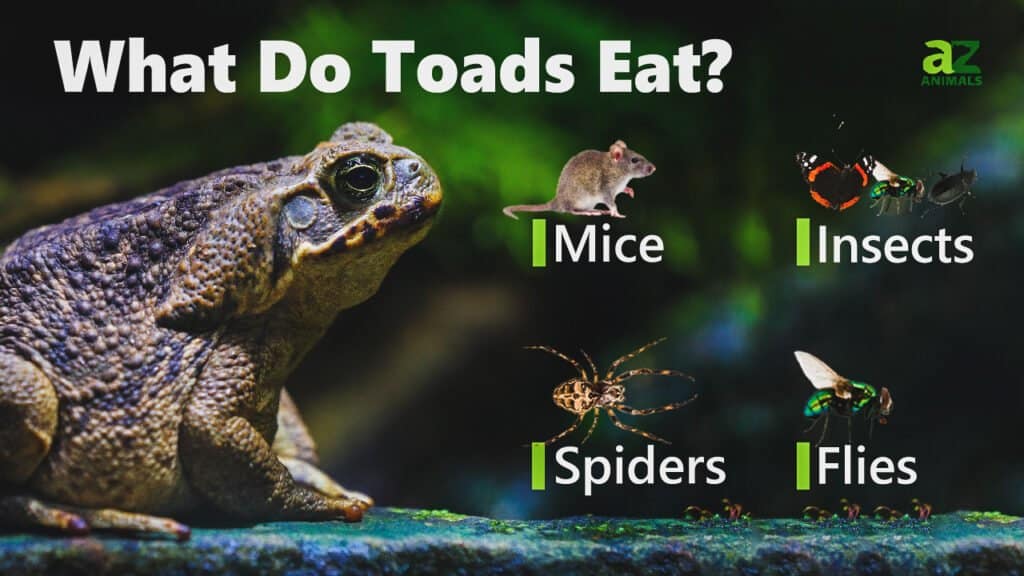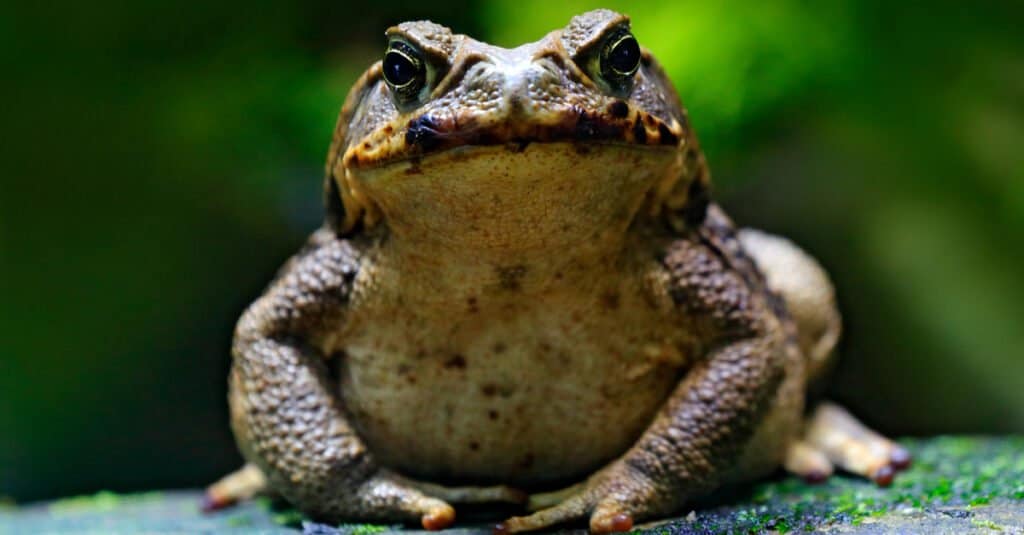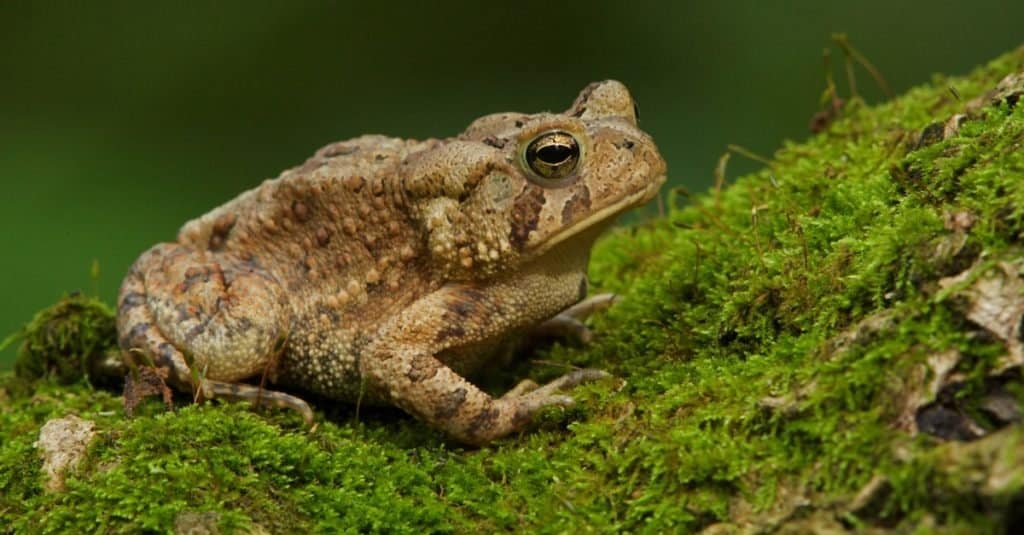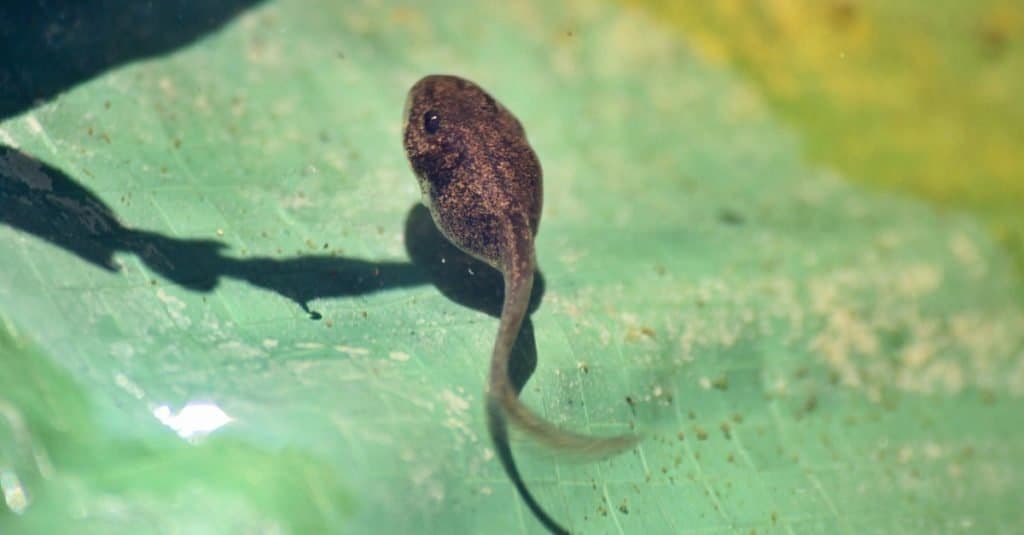Did you know that all toads are frogs, but not all frogs are toads? This little fun fact often throws people for a loop, but it’s true. In addition, there’s no actual scientific distinction between toads and frogs. This can lead to a lot of confusion when comparing a frog versus a toad. The term toad is generally used to refer to any frog within the family Bufonidae. Most toads possess dryer, more leathery skin, and shorter hind legs compared to most frogs. In addition, toads are generally more terrestrial than frogs and spend a greater portion of their lives on land. You can find true toads in various environments throughout the world aside from polar regions. Due to their widespread distribution, toads feature prominently in folklore and popular culture. Yet, many people continue to misunderstand them. For example, can you answer the question, “What do toads eat?”
In this article, we’ll attempt to put this confusion to rest by examining the dietary habits of toads. We’ll start with a discussion of what toads commonly like to eat. Then, we’ll move on to a conversation about how toads hunt and forage for food. Next, we’ll compare the diets of wild toads versus pet toads. Finally, we’ll end with an overview of the diet of baby toads. So, let’s hop into this discussion and answer the question, “What do toads eat?”
What Do Toads Like to Eat?

Generally speaking, toads will eat pretty much anything that they can stuff into their mouths. That said, they are predominantly carnivorous, meaning that they mostly eat animal matter. Their diet can vary depending on the environment and the type of prey that is readily available. Toads eat insect larvae, spiders, slugs, and worms. Larger toads may eat small grass snakes and harvest mice.
Additionally, each species of toad has different dietary requirements and tends to lean toward some prey over others. It should also be mentioned that toads eat different foods depending on their age. As tadpoles, they are more omnivorous and eat a wide variety of plant matter in addition to animal matter. It’s only once they mature that they become more carnivorous. Still, we’ve gone to the trouble of listing 10 foods that toads frequently like to eat. These are the foods that you can commonly find in a toad’s diet, albeit at different life stages. These foods include:
- Insects and insect larvae
- Spiders
- Snails
- Slugs
- Birds
- Small mammals
- Reptiles
- Other amphibians
- Algae
- Phytoplankton
- Worms
How Do Toads Hunt and Forage For Food?

Toads possess exceptional senses of eyesight and smell.
©Ondrej Prosicky/Shutterstock.com
Toads use their senses to hunt and forage for food. That said, they use some more than others in their search for their next meal. One of a toad’s most important senses when it comes to finding food is its keen sight. They possess excellent vision that is so acute they can see in color even at night. They use their sight to detect moving prey and to hone in on their target. On top of their keen sight, toads also have a powerful sense of smell. However, evidence suggests that they don’t often rely on smell for finding food, but mostly to mark out territory. Toads also have a keen sense of taste and will reject foods they don’t like. In addition, they are quite sensitive to touch and don’t generally like to be handled too much. However, they don’t rely on taste or touch much to find food.
Toads employ different hunting styles depending on the type of toad species. Most toads are active at night when insects and other animals come out to feed. Unlike frogs, toads do not really hop but rather run on their legs. As such, some toads prefer to chase after their prey. For example, Natterjack toads will run after their prey before roping up their target with their long, sticky tongues. Meanwhile, other toads evolved to use ambush tactics when hunting. These toad species will burrow themselves in the ground and wait for prey to wander past. Once the prey gets too close, the toad will then dart out and snap up its prey. While some toads use their long tongues to snag prey, others do not possess such a feature. Instead, these toads simply walk up to or pounce upon their target and swallow it whole.
What Do Toads Eat in the Wild?

Toads will eat pretty much whatever they can catch in the wild.
©Tom Reichner/Shutterstock.com
In the wild, toads will eat pretty much anything that they can catch with their tongues or their mouths. When it comes to prey, they aren’t exactly selective, although they do prefer the taste of certain foods. Overall, insects and other arthropods make up the bulk of a toad’s diet. Some insects and bugs that toads commonly eat include centipedes, flies, crickets, grasshoppers, worms, and beetles. They’ll also scarf down snails, slugs, and spiders with relish. The larger the toad, the larger the prey it will target. Ergo, fully mature, large species will also hunt for prey such as mice and rats. Some large species will eat reptiles including small snakes and lizards, and may even prey on other frogs or amphibians. On occasion, toads will prey on small birds and their eggs. Many toads will also eat small fish, especially when near water or as juveniles.
What Do Pet Toads Eat?

You should feed your pet toad mostly insects and other arthropods.
©Michiel de Wit/Shutterstock.com
Just like frogs, toads make popular pets for both amateur and serious enthusiasts. In order to care for your pet toad, you’ll need to know how to feed it a balanced and healthy diet. Overall, you’ll want to feed your pet toad mostly insects and arthropods. You’ll want to purchase commercially raised insects, as the ones in the wild may carry parasites or be exposed to pesticides. Toads generally only eat live prey, so all insects should be fed live. Some common options include crickets, grasshoppers, and mealworms. You can also provide your toad with flies, moths, or ants. Many people who keep toads as pets also introduce supplements into their toad’s diet so they get enough minerals and vitamins. Calcium in particular is a popular pet toad supplement. Make sure to regularly monitor your toad’s eating habits and remove uneaten insects or food periodically.
What Do Baby Toads Eat?

Tadpoles are omnivorous and eat both plant and animal matter.
©greggnormal/Shutterstock.com
Baby toads, also known as tadpoles, are the infant life-stage cycle of toads. Before they’re born, tadpoles begin their lives as eggs. Toads predominantly lay their eggs in water, which is where the tadpoles emerge when they’re born. Tadpoles remain in the water until they evolve into juvenile toads. They are omnivorous and will eat insects, small fish, algae, and phytoplankton. Common prey that tadpoles eat include insect larvae, fruit flies, and small worms. Some tadpoles will also engage in cannibalism and eat other tadpoles. As they mature, tadpoles begin to develop the features of adult toads. Once they become juveniles, their diet becomes more carnivorous, and they’ll begin to eat larger prey. If you’re raising tadpoles, you’ll want to feed them a good algae supplement, along with some small insects. You can also introduce a little boiled egg, leafy greens, or fish flakes.
Can I Keep a Wild Toad as a Pet?

Couch’s spadefoot toads have a distinctive spade-like structure on their hind legs for digging burrows to escape the hot and dry conditions. Removing them would not be ideal for them.
©Viktor Loki/Shutterstock.com
While it may be easy to replicate the habitat of a wild toad, if you wish to have them for a pet, it is best if you purchase one instead of removing them from the wild as wild-caught toads do not make good pets. Toads are known to reside in one location for the majority of their lives, only leaving their home area a few times a year for breeding purposes, and removing them from their natural locations can be extremely disruptive to their health.
Additionally, should you remove a toad from its environment, it is very important that they are returned to the same area. If not, they will be unfamiliar with their surroundings and may not know where they are. As they are familiar with their territory, they know where to go to breed, hide, eat, and even where to hibernate.
The photo featured at the top of this post is © iStock.com/ttbphoto
Thank you for reading! Have some feedback for us? Contact the AZ Animals editorial team.






